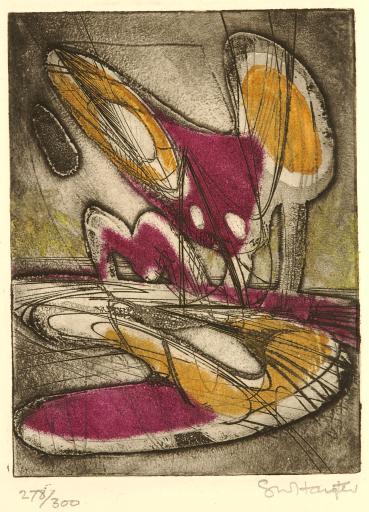Night Moth, Stanley William Hayter
Artwork Overview
Stanley William Hayter, artist
1901–1988
Night Moth,
1946
Portfolio/Series title: Laurels Number One portfolio
Where object was made: England, United Kingdom
Material/technique: aquatint; etching; engraving; scorper
Dimensions:
Plate Mark/Block Dimensions (Height x Width): 149 x 112 mm
Sheet/Paper Dimensions (Height x Width): 296 x 220 mm
Plate Mark/Block Dimensions (Height x Width): 5 7/8 x 4 7/16 in
Sheet/Paper Dimensions (Height x Width): 11 5/8 x 8 11/16 in
Mat Dimensions (Height x Width): 19 x 14 in
Plate Mark/Block Dimensions (Height x Width): 149 x 112 mm
Sheet/Paper Dimensions (Height x Width): 296 x 220 mm
Plate Mark/Block Dimensions (Height x Width): 5 7/8 x 4 7/16 in
Sheet/Paper Dimensions (Height x Width): 11 5/8 x 8 11/16 in
Mat Dimensions (Height x Width): 19 x 14 in
Credit line: Gift of Miss Cassandora Ritter
Accession number: 1950.0097
Not on display
If you wish to reproduce this image, please submit an image request

